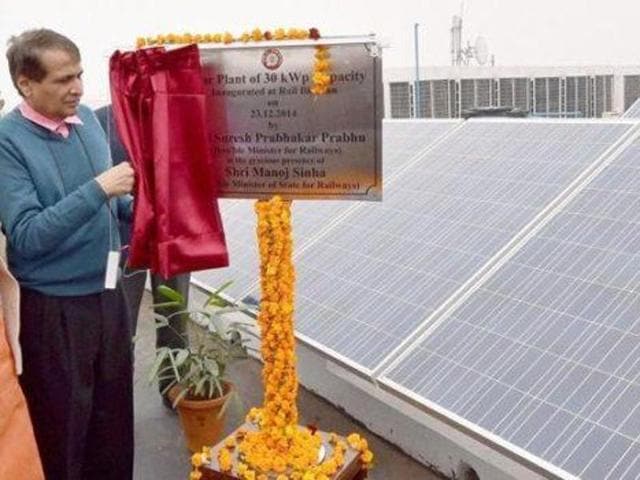What the railways can do about climate change
The Indian Railways should have a strategy for reducing greenhouse gas emissions
The Paris climate treaty has been opened for signature. In the run-up to the conference in December, a sense of urgency had gripped all nations. India had announced it will reduce its emission intensity by 30-35% of GDP by 2030 and lined up initiatives to achieve this goal. Year 2030 is not far-off and the task is huge. Many organisations, including the railways, are not making concerted efforts towards greenhouse gas emission (GHG) reduction in the belief that they are not the major polluter. This is turning out to be hindrance. The Indian Railways (IR) needs to get its decarbonisation strategy right by dumping this belief for good.

READ: India among 175 countries to sign Paris climate deal at United Nations
Rail is undoubtedly among the most carbon-efficient modes of mass transport. But there is much that can be done to make this sector exemplary, thus reducing GHG of the whole transport sector. Peter Drucker had said “if you can’t measure it, you can’t improve it”. Therefore, the strategy for the IR should be to qualify the carbon footprint of its infrastructure and operations.
Another strategy should be to communicate its footprint to stakeholders. The world is moving fast and the IR has to move as fast as the rest, if not faster. Globally, some railways are already showing their carbon footprint of trips on tickets. The European Union is working on a mechanism that calls upon rail network providers to give the footprint for any given infrastructure. Communicating the carbon footprint on the ticket would be a big motivator for the IR to work hard to reduce it.
READ: The destination for Indian Railways is within sight
The fourth strategy should be to unlock the potential of the ‘deemed licence status’ given to the IR under the Electricity Act, 2003. This status gives the IR the freedom to transmit or distribute electricity or undertake trading in it. India has promised that 40% of her installed energy capacity will be from non-fossil sources by 2030. The IR could leverage its ‘deemed licence status’ to invite open bids for purchasing electricity produced from renewable sources. This makes perfect business sense as it reduces not only the IR’s carbon footprint but also its energy bill, considering that the price of renewable (read solar) energy has come down substantially.
The fifth strategy should be to dream big — reduce GHG emission while simultaneously improving efficiency and services. The IR must have train sets (unit consisting of power and carriage, which reduces energy consumption) for all passenger trains running at an average speed of 100 km per hour or more by 2030. It can switch to Insulated-Gate Bipolar Transistor (IGBT) three-phase technology for all locomotives. It can lease land along railway tracks to solar power companies to install SPV along the tracks and develop a framework for sharing benefits. Create a dedicated fund for energy service companies (ESCOs), which can take up energy-efficiency projects.
READ: Bio-toilets in coaches: Rly division to start awareness campaign
These are just the basics. Their success will depend on how earnestly they are pursued. Whenever in doubt or falling short on targets, policymakers should think of the poorest, who are the most vulnerable to climate change. This thought would give them the required motivation!
Sanjay Kumar is additional general manager, Dedicated Freight Corridor Corporation, ministry of railways
The views expressed are personal





